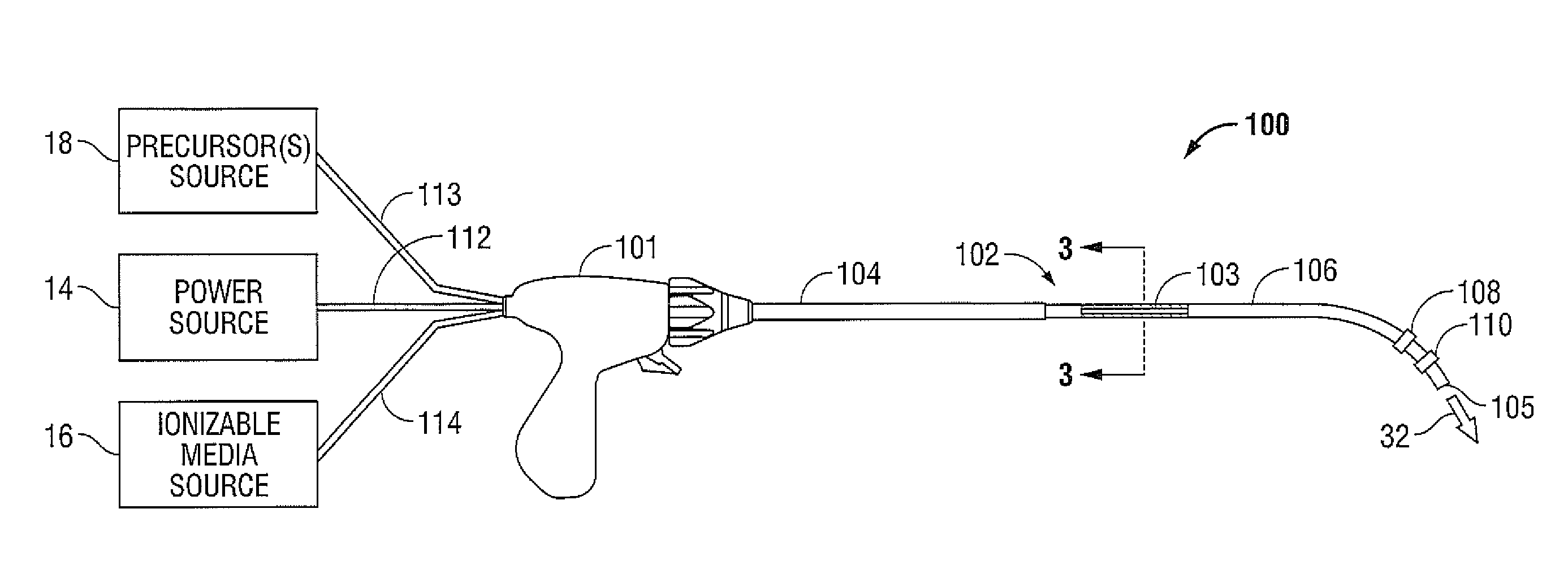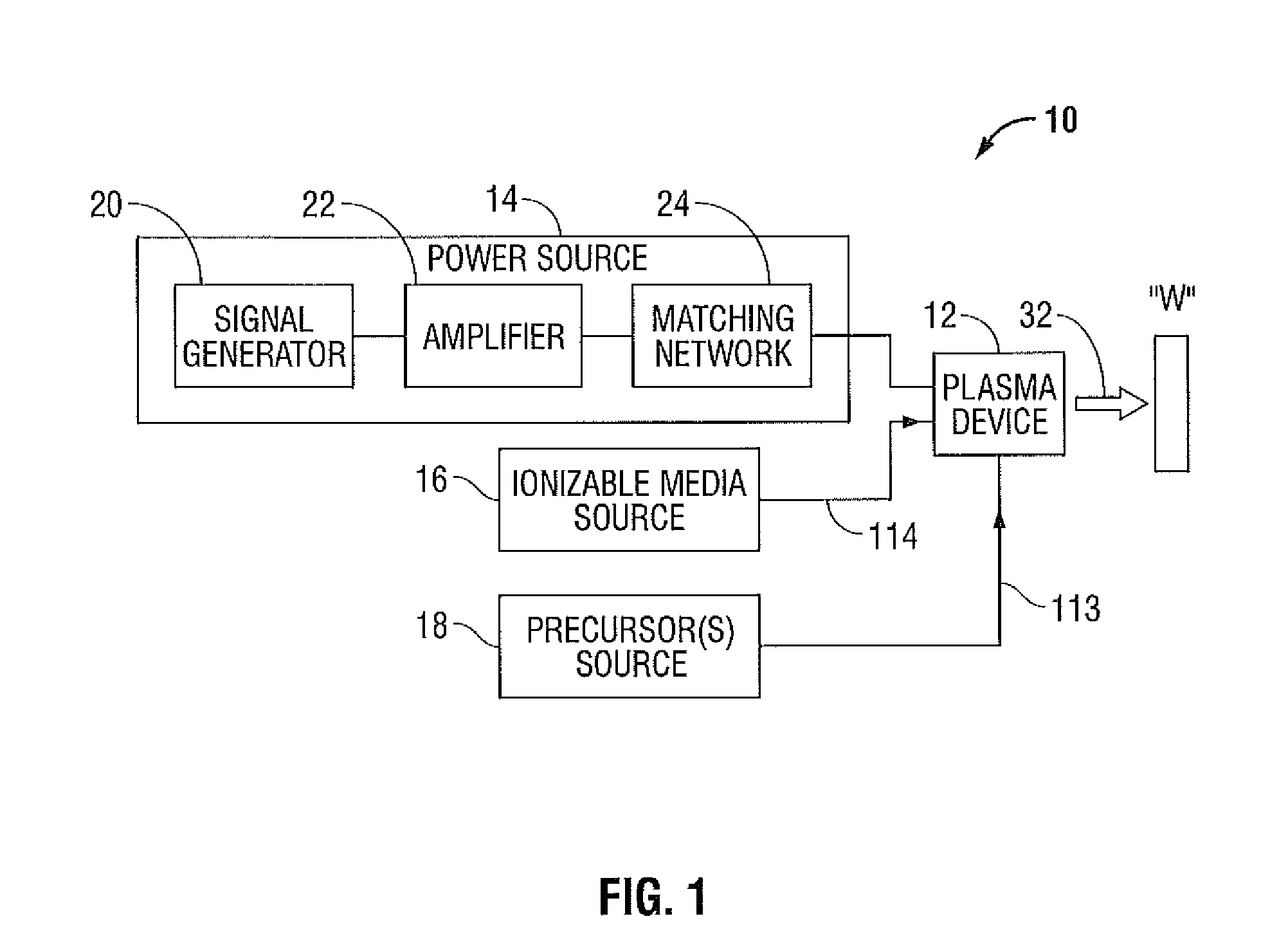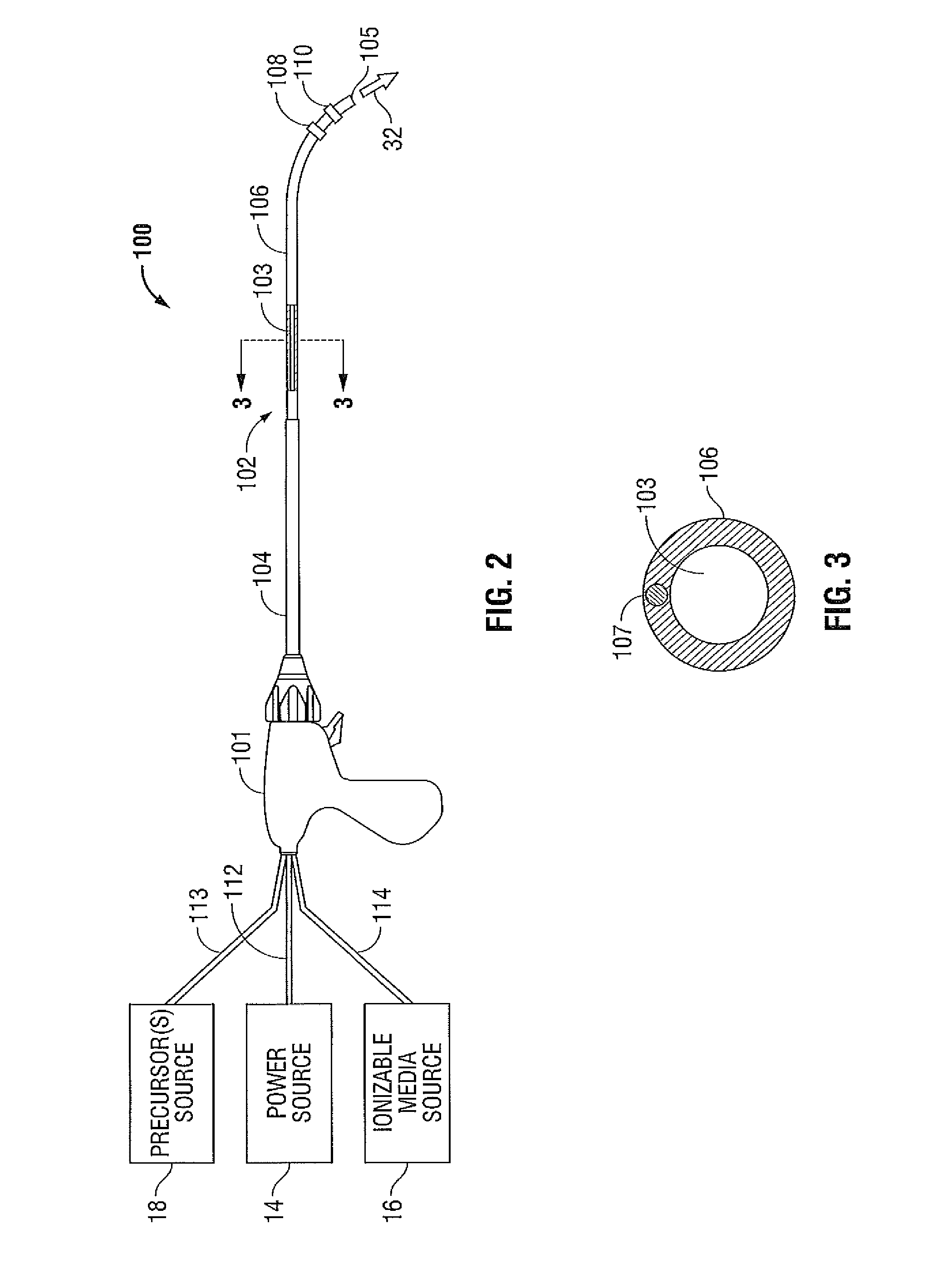System and method for sinus surgery
a sinus surgery and system technology, applied in the field ofplasma devices, can solve the problems of weakening the underlying bone mass, degeneration of the mucosa into polyps, and greater inflammation, and achieve the effects of high spatial, material selectivity, and temporal control
- Summary
- Abstract
- Description
- Claims
- Application Information
AI Technical Summary
Benefits of technology
Problems solved by technology
Method used
Image
Examples
Embodiment Construction
[0021]Plasmas are generated using electrical energy that is delivered as either direct current (DC) electricity or alternating current (AC) electricity at frequencies from about 0.1 hertz (Hz) to about 100 gigahertz (GHz), including radio frequency (“RF”, from about 0.1 MHz to about 100 MHz) and microwave (“MW”, from about 0.1 GHz to about 100 GHz) bands, using appropriate generators, electrodes, and antennas. Choice of excitation frequency, the workpiece, as well as the electrical circuit that is used to deliver electrical energy to the circuit affects many properties and requirements of the plasma. The performance of the plasma chemical generation, the delivery system and the design of the electrical excitation circuitry are interrelated—as the choices of operating voltage, frequency and current levels (as well as phase) effect the electron temperature and electron density. Further, choices of electrical excitation and plasma device hardware also determine how a given plasma syste...
PUM
 Login to View More
Login to View More Abstract
Description
Claims
Application Information
 Login to View More
Login to View More - R&D
- Intellectual Property
- Life Sciences
- Materials
- Tech Scout
- Unparalleled Data Quality
- Higher Quality Content
- 60% Fewer Hallucinations
Browse by: Latest US Patents, China's latest patents, Technical Efficacy Thesaurus, Application Domain, Technology Topic, Popular Technical Reports.
© 2025 PatSnap. All rights reserved.Legal|Privacy policy|Modern Slavery Act Transparency Statement|Sitemap|About US| Contact US: help@patsnap.com



